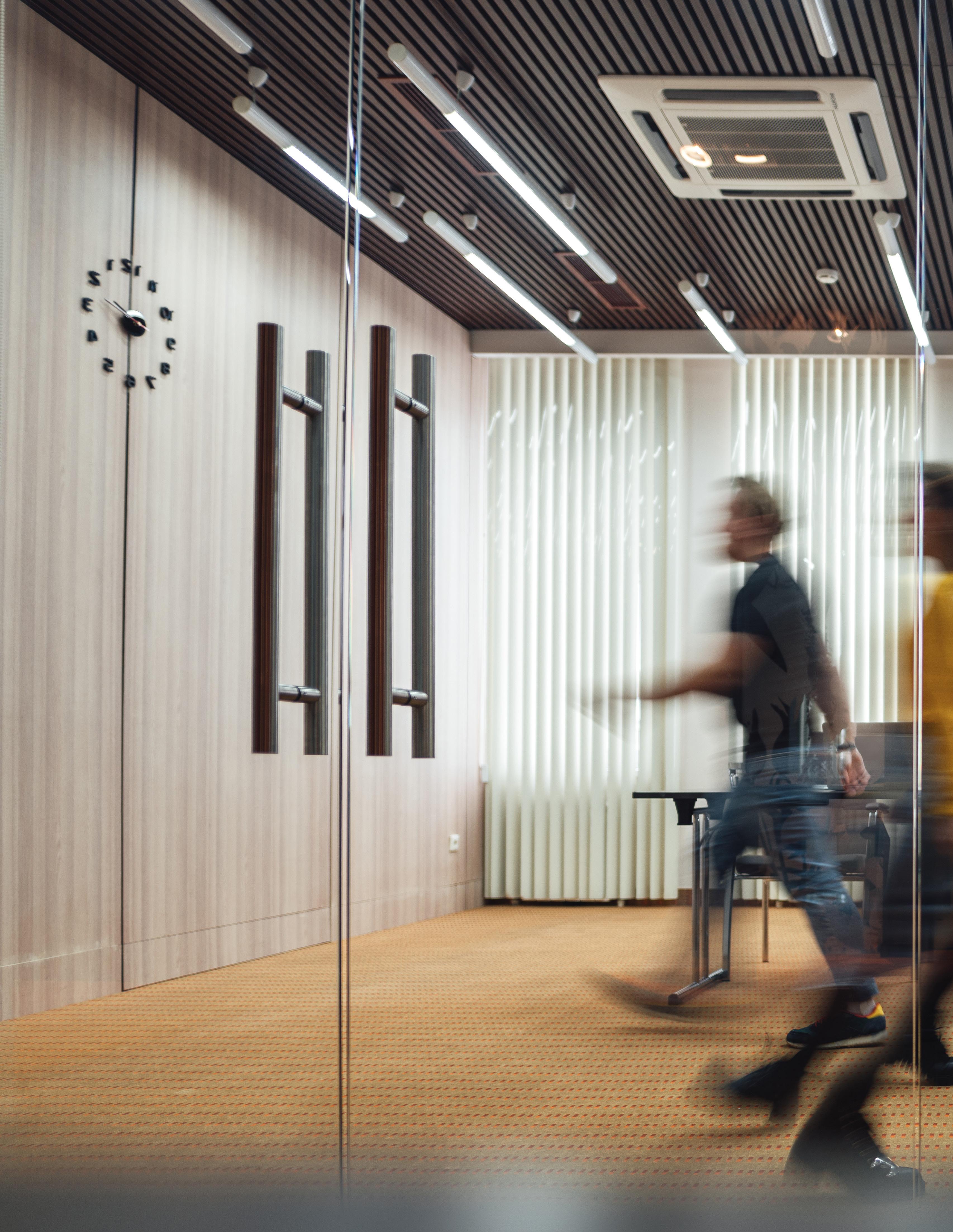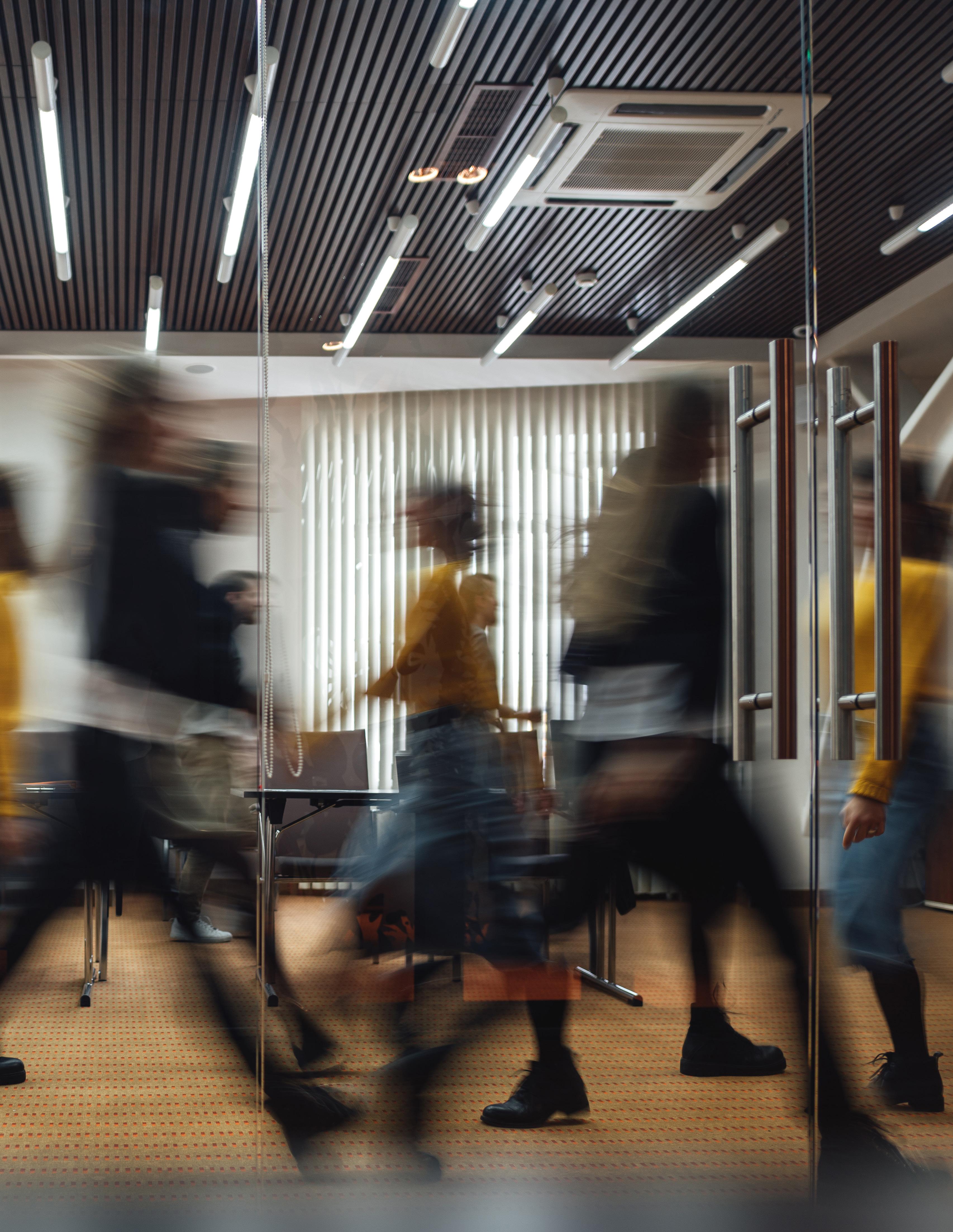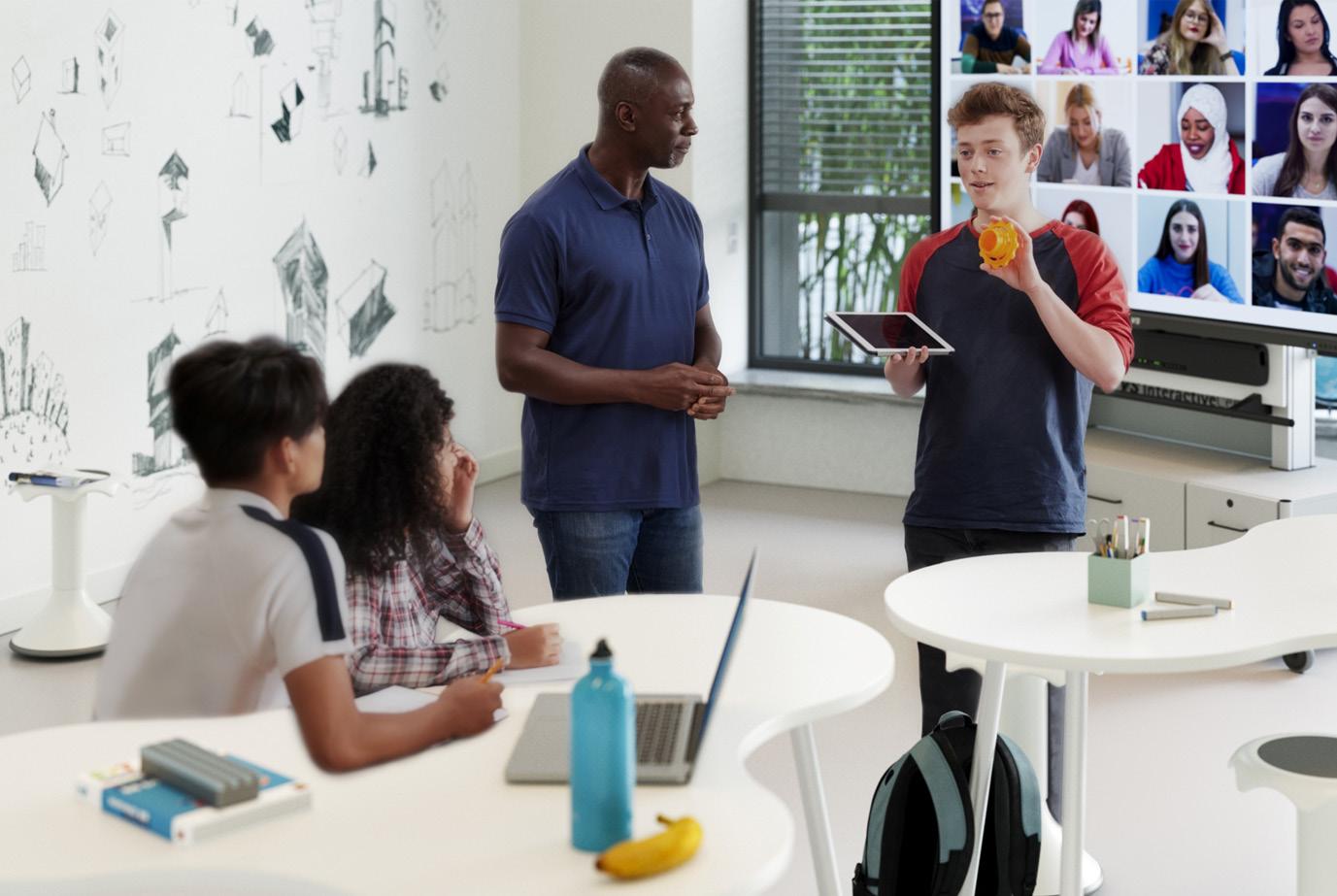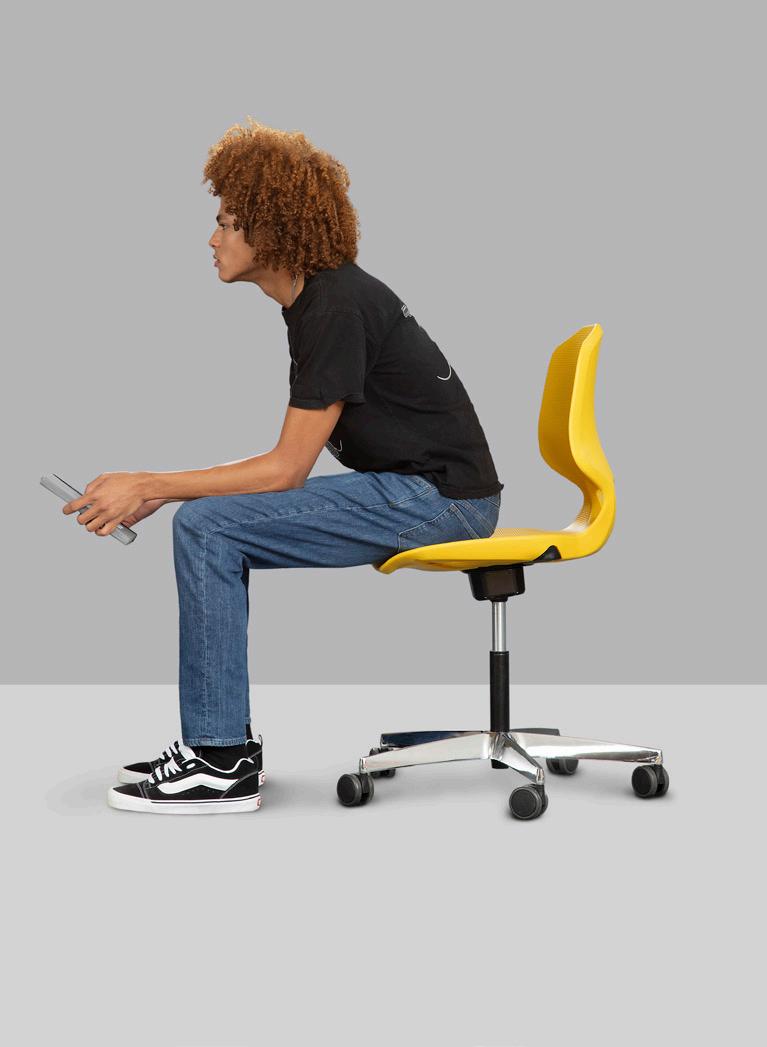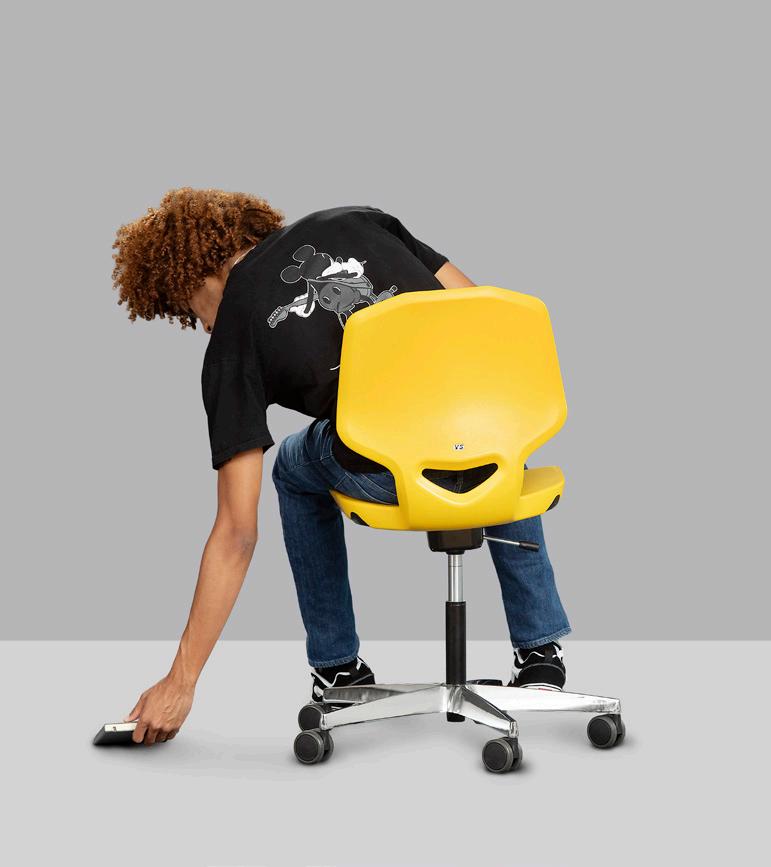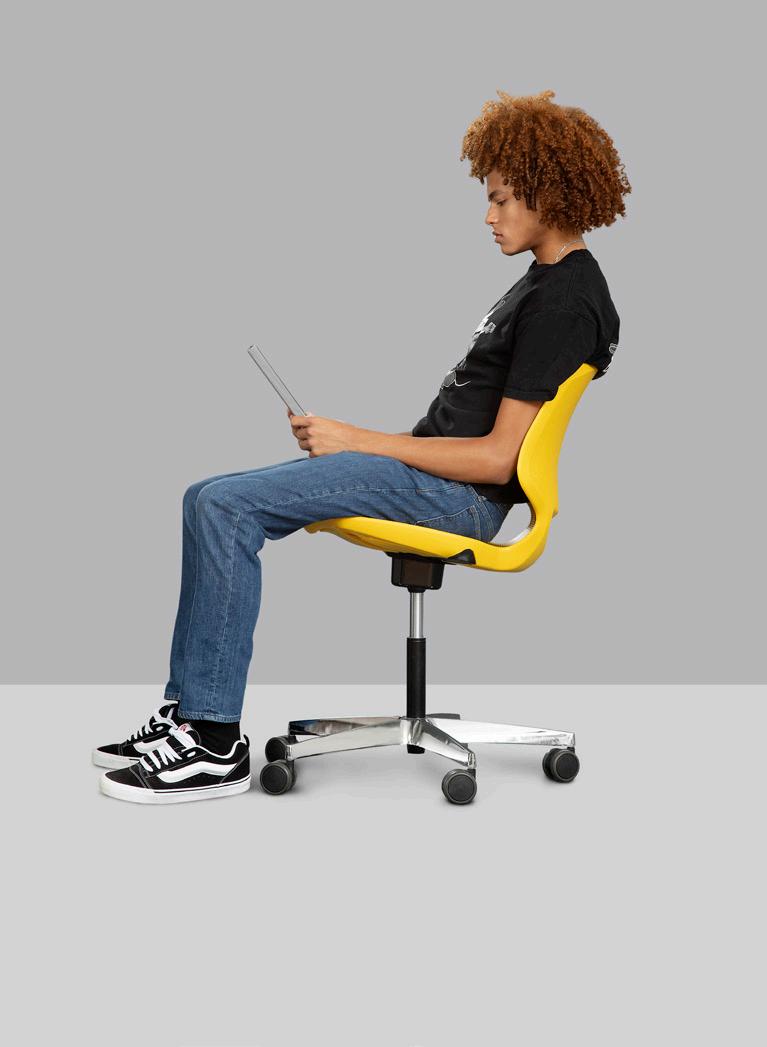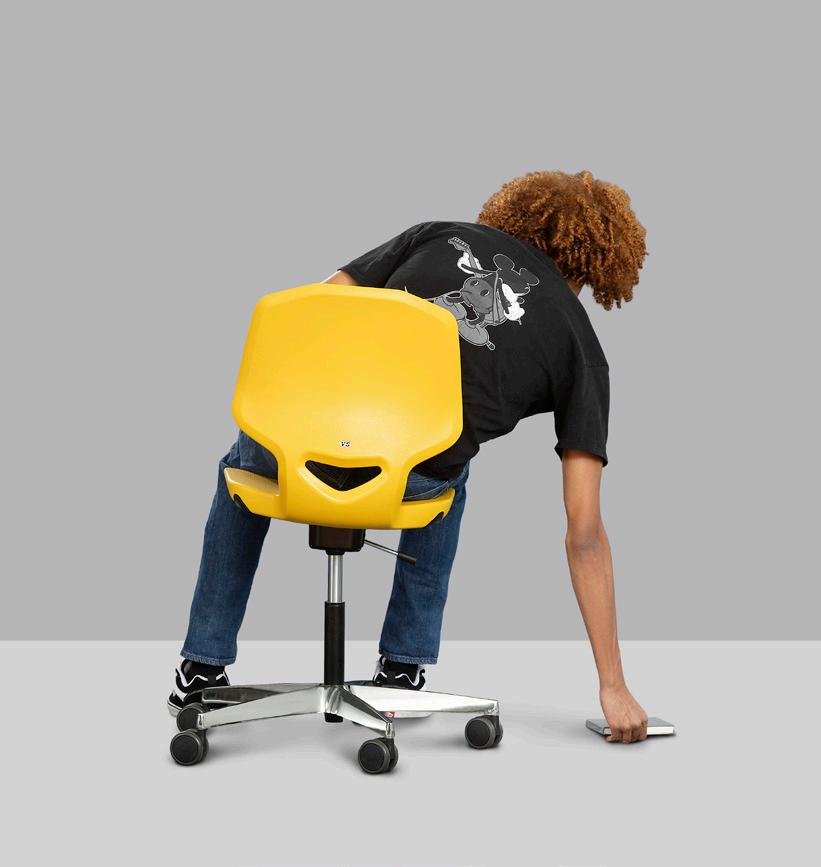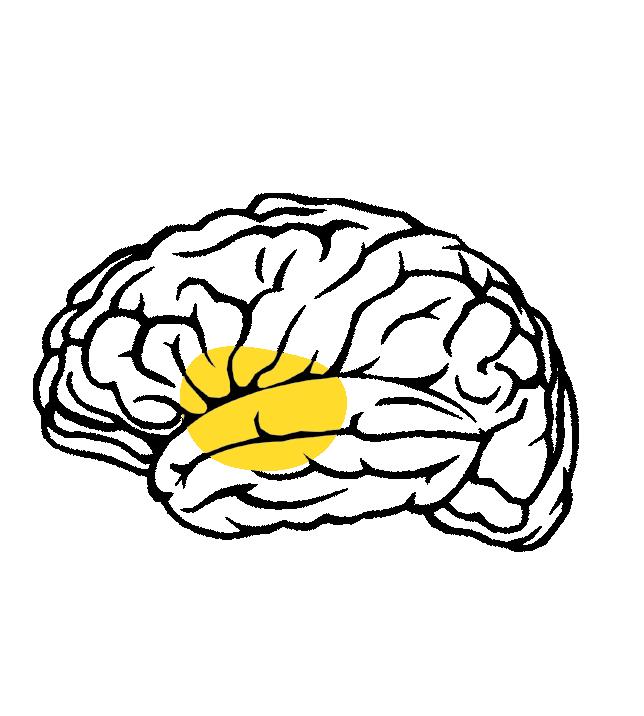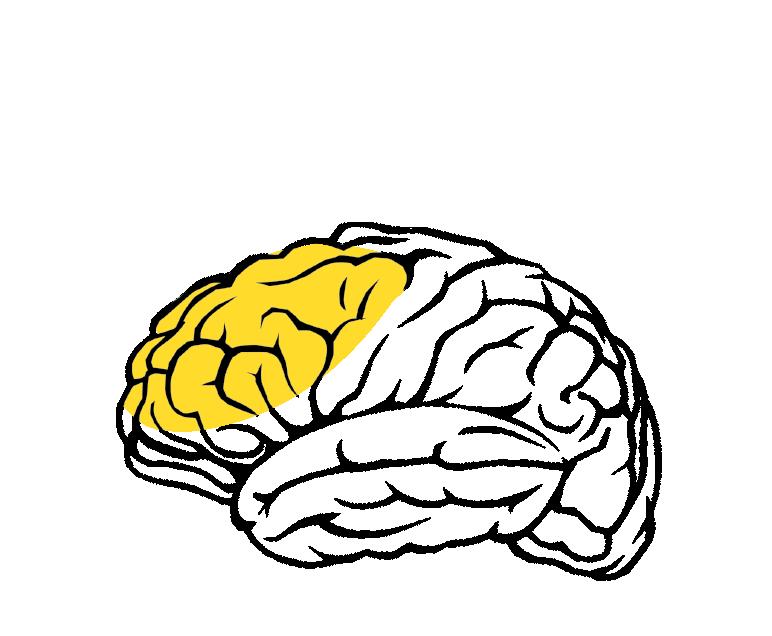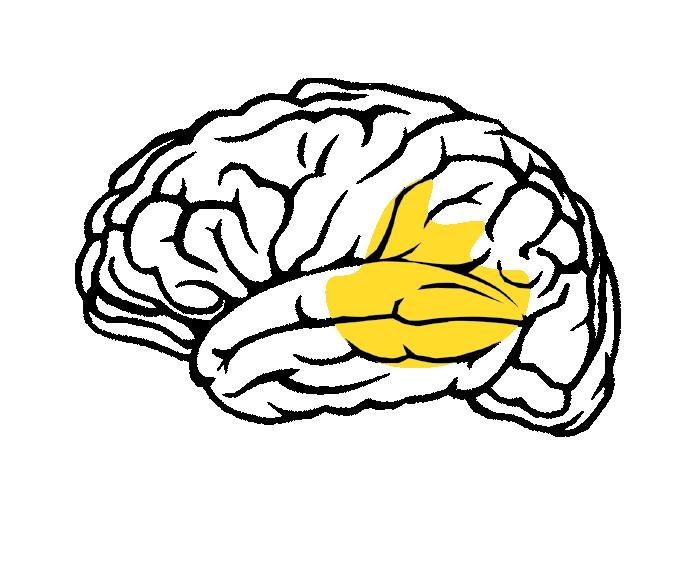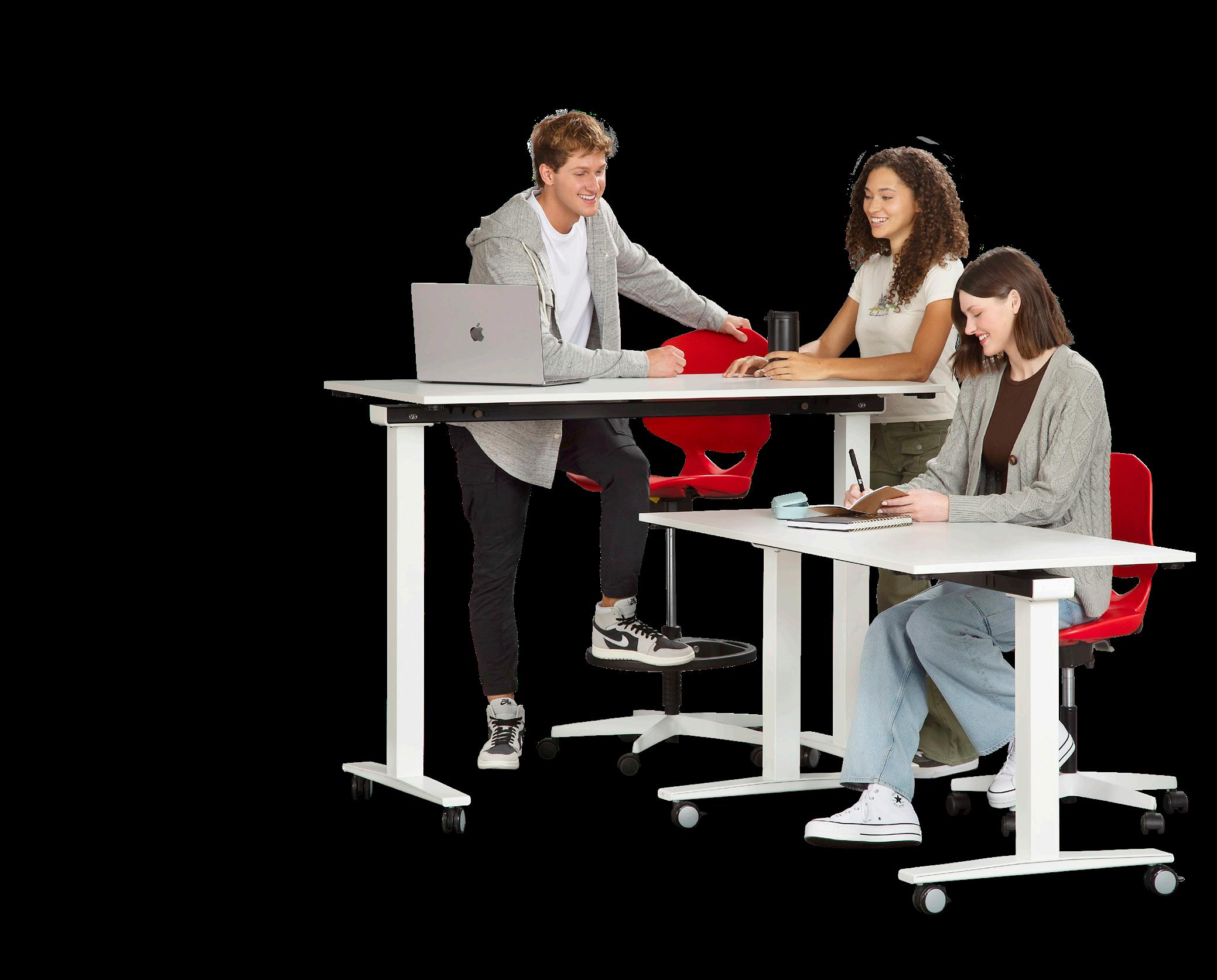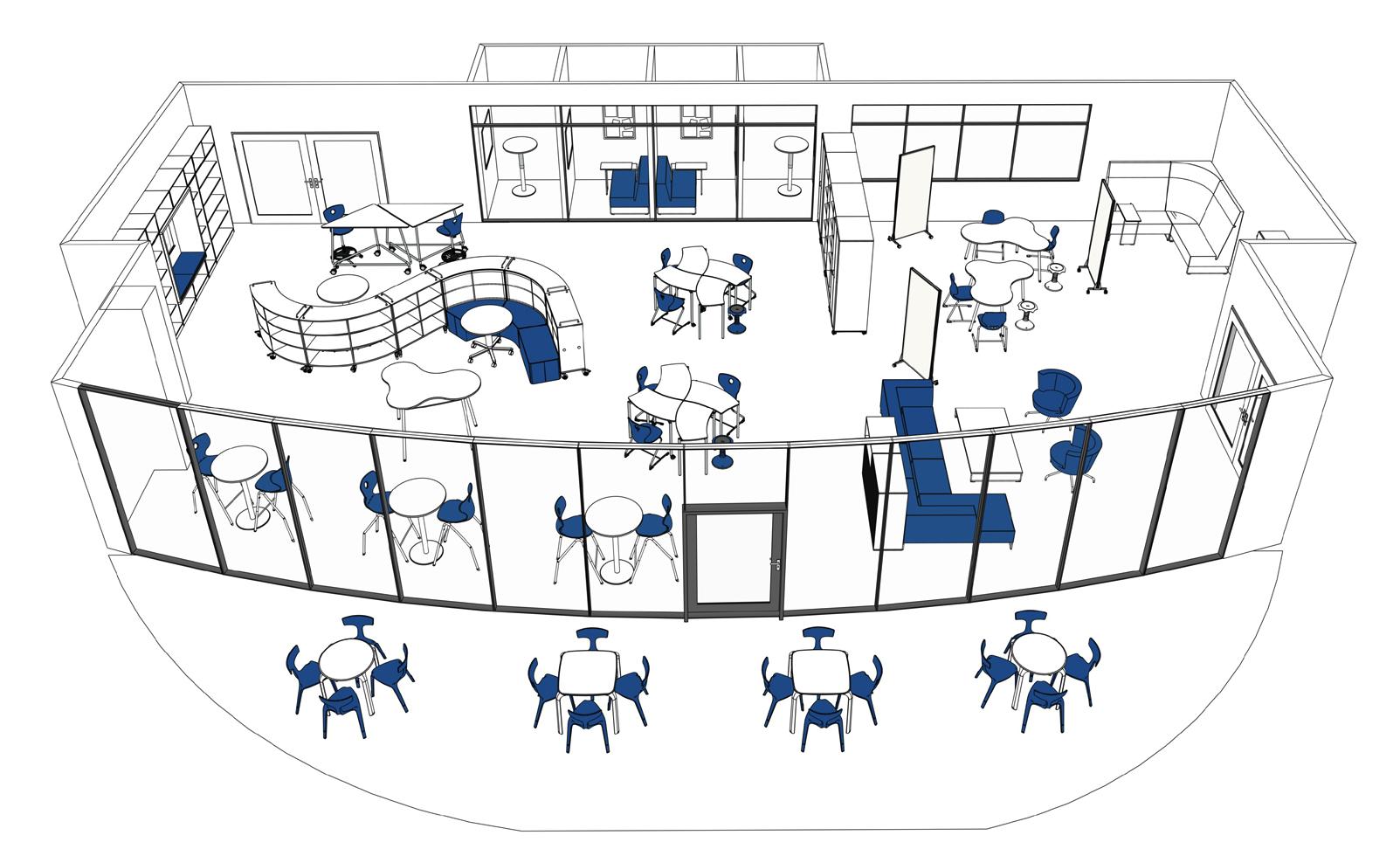WHAT AGILE MEANS FOR LEARNING
The word ‘agile’ is used excessively and often incorrectly equated with ‘flexible’
Agile comes from the field of software development and stands for a process-oriented approach to work. Agile working methods are now used in numerous industries to achieve faster results, increase flexibility, and be able to more specifically respond to the customer. The main assumption of both agile working and agile learning is that the environment is constantly changing, and rapid adaptability guarantees success. Agility should help with better cross-functional collaboration, creating more transparency and cooperation with communication, and increasing both productivity and motivation through added responsibility. Testing, learning, and adapting are the important learning triad, which in many cases occur during collaboration with others (social learning).
Studies confirm: People working in teams innovate faster, achieve better results, and report higher satisfaction. Companies that promote workplace collaboration are five times more likely to be high performing and more profitable. Companies rely on social capital. We are by nature social beings!
However, teams are under pressure to move faster than ever before. The highest-performing teams are different; little in their work resembles what they have done in the past. Their days are filled with an endless exchange of information and ideas that work in rapid cycles of iteration. Their tasks are interdependent from one another and their projects fluid.
This requires a smart working and learning environment that aims to support the learner as efficiently as possible, so that they can improve their performance. Taking a holistic view of the complex human system includes the possibility of carrying out regular movement during process-oriented work. Most people still regard thought processes as an abstract ability detached from the body – that our mind has little to do with the mechanically functioning organisms.
However, more and more researchers are now questioning this belief. After all, we humans are a highly complex system, in which physical, mental, and psychological interaction functions are constantly shaped and influenced by environmental stimuli.
“All parts of the body which have a function, if used in moderation and exercised in labors in which each is accustomed, become thereby healthy, well developed, and age more slowly..."
-Hippocrates
As studies by psychologists and neuroscientists show, physical processes (the term movement in regard to physical activity will also be used synonymously in the following explanations) influence thinking much more strongly than previously assumed. We have long known about the health benefits of an active lifestyle. Even the most famous ancient physician, Hippocrates (460–370 BC), recognized the connection between movement, activity, and health. “All parts of the body which have a function, if used in moderation and exercised in labors in which each is accustomed, become thereby healthy, well developed, and age more slowly, but if unused they become liable to disease, defective in growth, and age quickly.”
More than 1,000 years ago, people meditated and held discussions while walking. Teaching and learning took place while alternating between standing and sitting. The students of Aristotle were called peripatetics (“wanderers”), who acquired their knowledge while walking around large halls. The walking halls and promenades in the monasteries and ancient churches serve as proof that movement supported intellectual work and concentration.
Today, this tradition is experiencing a renaissance in the “Walk and Talk” measure. New studies confirm the
positive influence of moderate – and most importantly, voluntary – movement on thinking. For example, scientists found that more physically active seniors achieved better cognitive outcomes than their “comfortable” counterparts. In school, the principle of “active teaching” is a common term when it comes to promoting health, attention, and concentration performance, as well as learning success in everyday school life. A study from Israel found that regular mobilizing behaviors, such as simple but regular postural changes that interrupt longer periods of immobility, have a positive effect on brain activity and activate cognitive resources that otherwise remain unused.
In addition, regular physical activity integrated into everyday life ensures a balanced sensory stimulation (activation of depth sensitivity, proprioceptive, and vestibular sensors) and thus uses an important counterpart for the brain to the otherwise very one-sided and stressful sensory stimulation (optical and acoustic overstimulation) caused by digital media. If the senses are in balance, the human is in balance. Evolution created brains for movement. If people sit too much, stay in one place, have everything available in their immediate environment, their complex system will be brought out of balance.
HOLISTIC VIEW OF AGILE WORKING BASED ON NEUROPHYSIOLOGICAL FINDINGS
In recent years, neuroscience has found an empirically established relationship between physical activity, creativity, and learning, which are key elements for learning success and innovation
Active collaboration is a concept that was inspired by our research on active learning and embodied learning in the classroom. Key phrase: school in motion. It’s about inspiring people to break away from passive behaviors and get more physically and emotionally involved in the creative process. Static sitting leads to physical-mental deterioration and sabotages our ability to concentrate. Sitting still or any rigid behavior is not an evolutionary biological state. Physical activity directly affects cognitive processing areas of the brain, which, according to studies, helps the center for learning and memory (Hippocampus) – as well as our executive functions – participate.
Executive functions are essentially processes that contribute to increasing the performance of:
• Our working memory, the ability to retain and process a certain (relatively small) amount of information.
• Our flexible attention control, the ability to quickly and precisely switch focus between different requirements, or alternately observe and process different aspects of a task. Attention control also involves paying attention to the task-relevant information, ensuring the optimum level of attention for the selected aspects, and maintaining this until the end of the activity.
In particular, the aforementioned components of executive functions represent the central information processes that form the basis for achieving medium and long-term goals. In other words, it can be assumed that complex thought processes such as planning, problem solving, and strategy usually use most of the components of executive functions. Planning and organizing, for example, include being able to come up with a plan to achieve a specific goal, but also the ability to decide what is important and what is unimportant. Executive functions are seen as the foundation and most central and important aspect of any type of control and management processes. If these are not fully functional, the ability for long-term efficient action control cannot be optimally developed.
HIPPOCAMPUS
The center for learning and memory. Physical activity helps the hippocampus - as well as our executive functions - engage.
FRONTAL LOBE
Area that controls motor functions (movement). Regular physical activity supplies blood to the frontal lobe, providing proteins and hormones which neighboring brain areas - such as the executive functions and language areas - share.
The areas of the brain that control the motor function (movement) and are located in the frontal lobe – like the executive functions – are better supplied with blood through regular physical activity and provided with neuroplastic messengers (especially proteins and hormones), which neighboring brain areas such as the executive functions and language areas share.
No matter what effects movement has on us, it is always muscular contractions that trigger these successes. One of the most important keys to our holistic performance lies in the stimulation of the muscles, our largest metabolic organ. Fibrous tissues, as researchers have known for a few years, are not just a self-contained system that mechanically propels us forward on the instruction of the brain. They also form an important organ system that is connected to all organs of the body and not only strengthens and revitalizes them, but also generates positive physical, mental, and emotional interaction.
As soon as muscle fibers begin to move, a cocktail of molecular messengers is released (including proteins, enzymes, hormones) that positively affect the metabolism throughout the body. In recent years, researchers have identified nearly 3,000 different proteins that muscles release during their work – proteins that are then fed into the bloodstream. Among these proteins are hundreds of
hormone-like substances that migrate into the body. This includes the brain maturation protein BDNF (Brain-Derived Neurotrophic Factor), which is known to positively stimulate the structure of neurons, promote neurogenesis (nerve cell formation in the hippocampus) and has a neuroprotective effect (including the prevention of aging processes).
Without exaggerating, BDNF can be called “miracle fertilizer” for our brain cells as it also supports the release of dopamine (neurotransmitter), a hormone that supports neuroplasticity by integrating the newly formed neurons into existing circuits. In addition, it should be noted that dopamine not only promotes selective attention, working memory and long-term memory, but is also involved in arousing curiosity and making quick and safe decisions.
Thus, BDNF is one of the most important stimulators of neuronal maturation and remodeling of the brain. The more we get our brains to produce BDNF through learning and collecting diverse experiences – in combination with exercise – the faster and more productive we become.
However, inactivity, one-sided overstimulation, little meaningful work, and emotional-physical stress factors encourage the release of the stress hormone cortisol.
This suppresses the production of BDNF with massive permanent damage to our brain. For example, people with constant stress have a smaller hippocampus. Regular physical activity, on the other hand, can double the number of newly formed nerve cells that can integrate into existing circuits. But this requires movement-stimulating space and learning conditions in everyday life, an enriched environment.
“Environmental Enrichment” has been the focus for years when it comes to enabling essential healthy behaviors and reducing pathogenic behavior. The primary aim is to promote the physical and mental well-being of students through a balanced and natural stimulation of the sensory organs. A more physically stimulating environment demands and promotes an interactive interweaving of physical and mental processes. General well-being and above all intellectual work are the beneficiaries.
French psychologist, Jean Piaget, was able to prove that a child’s sensorimotor skills are also the basis for their intellectual, social, and personal development. A lack of vestibular-kinesthetic sensory experiences – the sensors that can only be activated by movement – can lead to posture and behavioral disorders, concentration deficits, speech, reading, or arithmetic weaknesses.
A research group led by Brian R. Ickes was able to show, for example, that rats kept in a more stimulating environment released more nerve cell protective factors in the brain than the control group. Such proteins help nerve cells to differentiate and keep
them alive. They are generally regarded as a key component for the brain’s adaptability and change-ability (bio-positive neural plasticity) and thus form the basis for thought processes. All these findings help us understand that body, mind, and soul form a unit from which any separation is unnatural.
The positive effects of movement on mental fitness have been proven by relevant studies. Constant posture changes, standing and moving around the room increases attention by pumping oxygen and fresh blood through the brain. Research has also shown that using our hands to gesture, draw, or write activates our sensorimotor systems, which are not tapped into when inactive. Environments that allow for a range of postures and positive stimuli also promote engagement.
Stanford researchers found that walking promotes creative inspiration – it boosted a person’s creative output by an average of 60%. In another Stanford study published in the book Make Space, researchers examined four prototype rooms to understand how environments affect collaboration. The room that encouraged students to stand and move “allowed a hearty harvest of ideas.” Conversely, “students who sat comfortably on sofas were often quick to criticize other ideas rather than create new ones.” Our brains and bodies are designed for regular movement in everyday life, for movement in a natural environment. French philosopher, Jean-Jacques Rousseau, wrote “...I can...only meditate when I am walking; when I stop, I cease to think.”
BRAIN–DERIVED NEUROTROPHIC FACTOR
DOPAMINE
THE INFLUENCE OF EMOTIONS ON THE LEARNING PROCESS & LEARNING SUCCESS
How you feel is how you learn
From a holistic aspect, it should not be forgotten that work and collaborative processes are based on the fact that humans are exposed to natural (spatial) environmental stimuli. The more natural the living conditions and person’s behavior, the better the well-being and thus also the learning process or productivity. Like positive feelings have a significant influence on holistic health and memory, negative feelings also have negative effects. The limbic system is responsible for controlling this emotional behavior.
“Limbic” is derived from the Latin “limbus” = hem, since the attached structures of the beams (also called corpus callosum, a data highway between the two cerebral halves) surround like a belt or ring. The limbic system, which is home to the hippocampus (memory and learning), is the filter through which all sensory information must pass. It is also the entity that sorts out relevant information, provides it with emotions, and bundles it before it is deposited in widely distributed areas of the cerebral cortex. Learning, movement, memory, and feelings are therefore very closely related to each other in terms of brain anatomy.
Accordingly, a positive attitude towards learning (meaningfulness) is just as important as natural stimuli (humans once evolved from nature, emerged from, and now interact with it). The limbic system is of great importance for our archaic connection with nature. Our reptilian brain and limbic system are crucial for whether we feel comfortable in a particular place or situation, or whether we are in alarm and escape mode.
“And men ought to know that from nothing else but (from the brain) come joys, delights, laughter and sports, and sorrows, griefs, despondency, and lamentations.”- Hippocrates of Kos
LIMBIC SYSTEM
Home to the hippocampus (memory and learning), all sensory information passes though the limbic system. It sorts out relevant information and provides it with emotionstherefore learning, movement, memory, and feelings are very closely related to each other in terms of brain anatomy.
HOW TO GAIN THE COURAGE AND PERSEVERANCE TO STAND UP FOR WHAT IS RIGHT
The burden of habits
Many are chained by years of habits and are very reluctant to participate in something new and better. Giving up ideology and convention triggers uncertainty and thus fear.
We know from psychotherapy research that you can hardly make changes in your way of life on your own, but only in close cooperation with others. You have to continuously discuss with others the reasons and the goals with which you want to change your life and which fears, doubts, and inner resistance arise.
For a sustainable change in consciousness and behavior it is necessary to initiate an emotional process beyond cognitive insights that encompasses the entire personality of all those involved. At a social level, this means that collective problems such as climate change or racism must also impact the individual emotionally. The “Fridays for Future” movement, as well as the current worldwide protests against racism, have shown that a social protest movement can have an enormous emotional effect on the activists involved and also unfold on a political level.
Another important factor for the willingness to change is the experience of self-efficacy. When I see first-hand how my efforts to change make an impact, my self-confidence is strengthened. I gain the courage and the perseverance to stand up for what I know is right and, even in the face of setbacks, will not let myself be dissuaded from my path. This creates self-confidence in one’s own ability to change.
Agile working needs space for physical, mental, and emotional movement
Despite home office options, employees (including those who work from home) will continue to spend time in the office and with colleagues.
Offices and classrooms that are designed for linear processes (rows of individual tables or sitting meetings) do not adequately support process-oriented teams or informal, spontaneous meetings. Teams and collaborative learning need flexible attitudes in order to meet changing requirements in everyday work. Correspondingly, companies and learning spaces need to provide more space and resources for the creation of team areas and shared spaces that enable successful, productive, and experimental team collaboration. Digital and analog information flows as well as personal and virtual meetings are equally important.
A study at Rosenheim Technical University of Applied Sciences on learning environments of the future has shown that interior design directly influences the learning performance of students. Whether students feel comfortable, motivated, and can concentrate depends on the size, lighting conditions, acoustics, and atmosphere of the educational spaces. Consequently, the most effective learning environments often have varied room shapes and offer a variety of different learning zones and break out spaces (quiet, focused zones, collaboration zones, active learning zones, and more).
Flexibility must be learned. The trend is heading towards interactive learning and teamwork, which can be supported by flexible furniture and media technology. New didactic concepts can emerge from innovative interior design.
The Rosenheim research showed that in predominantly mobile positions, such as standing, students were far more likely to arrive at the correct answers and new ideas than while sitting down. If the room layout was adapted to the task, learning behavior and group work improved as did the decision-making process. By working while carrying out different posture changes or while standing, creative and accurate decisions noticeably increased. An optimal working environment meets the above requirements without disregarding
SPATIAL DESIGN SUGGESTIONS FOR AGILE TEAMS, FROM A HOLISTIC PERSPECTIVE:
Create spaces that can be individually personalized or adapted to group-speci c t asks and do not force student s into rigid work st andards. Key focus: multi-space concept . Flexible partition walls for different room arrangement s are helpful here. These movable elements make it possible to divide an open area into individual zones for diffe rent variable uses (team / individual work). In addition, if all t ables, chairs, and cabinet s are mobile and there is suf cient practical infra structure in place, nothing stands in the way of a fast and functional redesign.
Provide your student s with tools that make them feel optimally supported in their work (ergonomic, mobile units).
•A ctive seating with 3D rocking seat s to support intuitive and need-based sitting behaviors
•Stools offering exible seating
• Sit-to-stand t able s for individual workst ations, standing t able s for meeting rooms, or open areas with seating support high stools with 3D rocking seat s and foot rings, a s well a s standing mat s
• Lounge furniture with acoustic insulation as places for retreat , relaxation, or private conversations
•Vertical surf aces supporting process-driven learning
Provide spatial transparency so that people can see and be seen – not only does this create a relationshi p of trust , but also promotes sensory qualit y (e.g eye health).
Create spaces and paths that support f ace-to-face interaction, rather than exclusively using technical devices.
•Cafeteria/cafés, informal meeting place s in central area s
•Central courtyard where students can work, eat lunch, walk, think, experience nature, or relax
• Small group “ Walk and Talk” meetings
Design areas that allow student s to decide how much and which stimuli they want to digest. This means withdrawing if they feel exposed to too many stimuli or also need to balance stimuli through movement
•Retreat area s or relaxation space s
•G ames , activitie s (ping pong , indoor trampoline, pool t able); learn from the tech comp anies
Note: For tech giants like Facebook, Apple, and LinkedIn, it has been long understood: playing and working go hand-in-hand. You see relaxation and play opportunities everywhere in the offices of industry giants – from classic foosball tables to strategy-based board games to team-based computer games, employees are offered a lot. And for good reason. It has long been clear that playing during work and a playful approach to work itself enriches creativity. The fact that team games also train strategic skills underlines the justification of “play corners” in offices all the more.
Provide spaces that have a calming effect through materials, surf aces, colors, plants, light , and a view inviting contemplation. It is also advant ageous to have separate relaxation / retreat rooms where you are surrounded by light effect s, quiet sounds, fragrant scent s, wate r columns, and melodies while comfortably lying or sitting. The carefully selected environment (and outdoor areas) controls and arranges the stimuli, creates well-being , takes people’s fears away, and makes them feel safe – improving sensory perception and relaxation at the same time.
Create areas where people can interact and net work without being distracted or disturbed.
Multi-space concept that embodies holistic perspectives
At the end, the learning environment is only a tool in the hand of teachers. As Blackmore et al. (2011) conclude: “Buildings on their own are not enough.” It is what teachers do with those buildings that counts. But giving teachers the best tools to do their job as well as they possibly can is a vital first step towards creating great learning opportunities for all young people.
Blackmore J, Bateman D, Loughlin J, O’Mara J, Aranda G (2011). Research into the connection between built learning spaces and student outcomes. Melbourne, Victoria.
Ickes Brian R. et al (2000). Long-term environmental enrichment leads to regional increases in neurotrophin levels in rat brain. Exp Neurol 164(1): 45–52.
Johnannsen DL, Ravussin E (2008). Spontaneous physical activity: relationship between fidgeting and body weight control. Curr Opin Endocrinol Diabetes Obes 15(5): 409-415.
Katzmarzyk, P.T., Church, T.S., Craig, C.L. & Bouchard, C. (2009). Sitting time and mortality from all causes, cardiovascular disease, and cancer. Medicine and Science in Sports and Exercise, 41 (5), 998-1005.
Kirchner et al (2012). Evaluation of the temporal structure of postural sway fluctuations based on a comprehensive set of analysis tools. Physica A, 4692–4703.
Korte, M (2013). Ever young in mind. Amazing insights from brain research into aging. DVA publisher. Munich.
Kwak L, Kremers SP, Bergman P, Ruiz JR, Rizzo NS, Sjöström M (2009). Associations between physical activity, fitness and academic achievement. J Pediatr 155(6): 914–918.
Lopes L, Santos R, Pereira B, Lopes VP (2013). Associations between gross motor coordination and academic achievement in elementary school children. Hum Mov Sci 32(1): 9–20.
Molendijk M L, Haffmans J P, et al (2012). Serum BDNF concentrations show strong seasonal variation and correlations with the amount of ambient sunlight. PLoS One. 7(11):1-7.
Oppezzo M, Schwartz, D L (2014). Give your ideas some legs: The positive effect of walking on creative thinking. Journal of Experimental Psychology: Learning, Memory, and Cognition.


